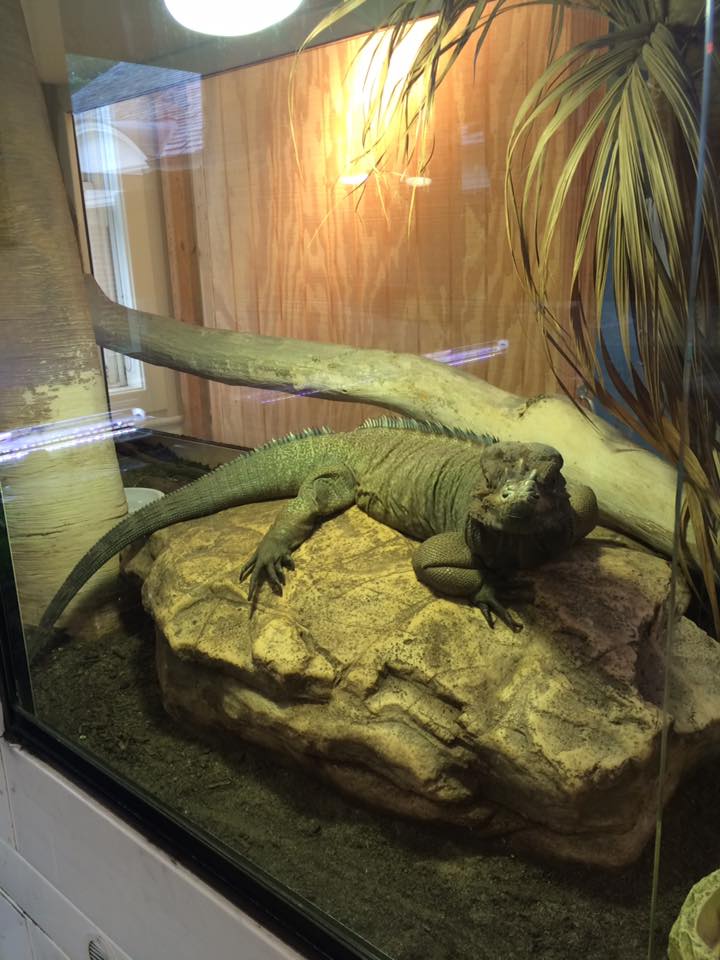ANIMAL: Rhinoceros Iguana Cyclura cornuta Type of Animal: Iguanid Habitat: Rocky areas, scrub woodland/forest, semideciduous/deciduous forest (open & closed), dry forest (open & closed), subtropical moist forest (open & closed), dry rocky forest (especially of open type in coastal areas), lowland areas, savanna, woodland, coastlines, scrub, desert, cactus thickets Location(s): Hispaniola & surrounding area Appearance: Males larger than females w/ more prominent dorsal crests/horns, both sexes have 3 tubercles on snouts resembling rhino horns, males have dewlap, uniform gray to brown drab, crest of pointed horned scales extends from nape to tail tip, vertically flattened tail, males have more prominent jowls Food/Diet: Greens, vegetables, fruit, berries, leaves, flowers, small lizards, snakes, insects, carrion, crabs, snails, beetle grubs, seeds, grains, cactus pads/flowers/fruit, legumes, birds, small mammals, eggs Status in Wild: Endangered Conservation: Breeding from breeding centers, zoos, wildlife parks, & private breeders. Reintroduction programs to areas w/ low densities of alien predators. Lifestyle: Solitary Additional Info: Called: Male Female Young-Hatchling Group-Solitary Weight: Male-20 lbs Female-12-15 lbs Gestation: 3 months Life Span: 20 years in wild, 30-40 years in captivity Body Length: Male-3-3.5 ft Female-2-2.5 ft Tail Length: Male-7.2 in Female-13 in Main predators of adults are large snakes, hawks, dogs (introduced), & cats (introduced). Smaller snakes, mongooses (introduced), rats (introduced), & pigs (introduced) prey on young. These animals, especially males, fight fiercely over territory. Endangered due to introduced predators, nest destruction by goats, hunting for meat, pet trade, habitat loss, deforestation, human recreation by nest sites, livestock grazing, mining, agriculture, & habitat exploitation for charcoal production/fuel wood. Females lay anything from 2-34 eggs per clutch. Sexually mature around 3-4 years old. Eggs usually laid in summer. Young rhino iguanas born completely independent from their mom. While females don’t look after young, they’ll sometimes defend nest for a few days. They’re active during the day (diurnal). Like other rock iguanas, they’re primarily terrestrial. Fun Fact(s): Their eggs some of the largest lizard eggs in the world. Iguanas head bob to defend territory. They have wide range of temperaments, from friendly to aggressive. They play important role in seed dispersal due to diet.


Its looking like a big lizard. Nice animal related article post shared here.